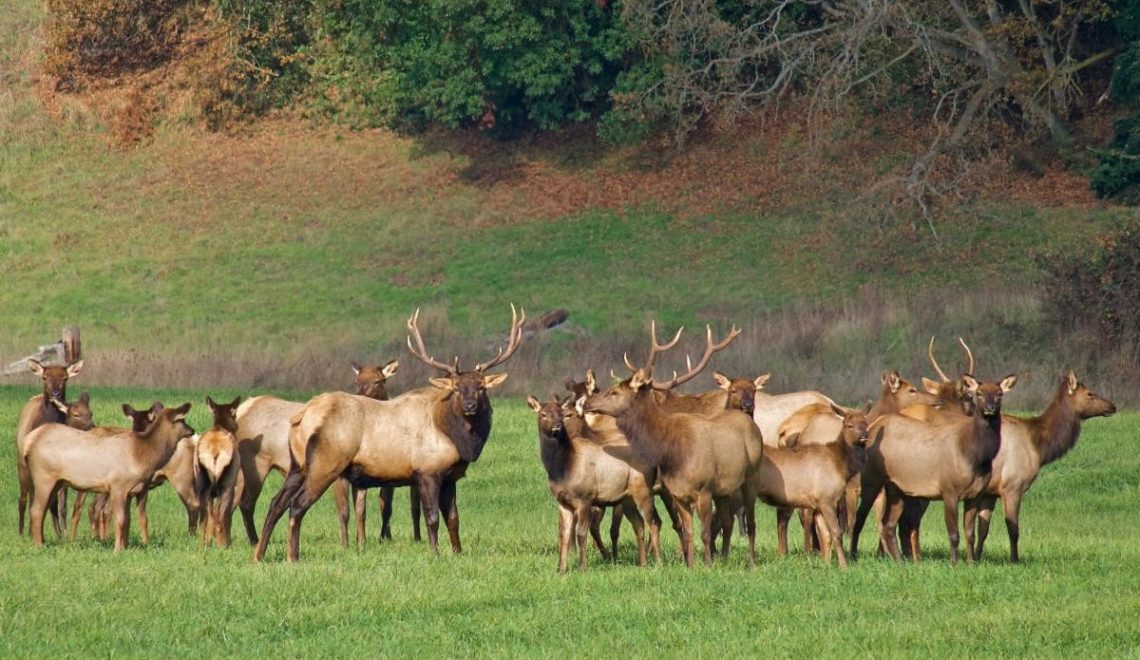
Bull Bugling Begins
| *Photo Credit: Michael DeMarco Sequim herd off Port Williams Road
The majestic Roosevelt elk are an iconic species in Olympic National Park. In fact, the land was originally designated as a national monument by Theodore Roosevelt to provide protection for the overhunted and dwindling elk populations. A conservation success story, Olympic National Park is now home to the largest unmanaged herd of Roosevelt elk, consisting of nearly 5,000 animals. Most elk embark on seasonal migrations. In the Olympics, the elk migration is vertical. The herds move up toward mountain meadows in spring to take advantage of newly emerged vegetation and move back down the valleys into the lowlands to feed on woody plants and cured grass as winter nears. As a large herd animal, their presence in the landscape is often evident. But one of the most fascinating times to observe elk is late September and October, when the fall rut begins. A rut is the mating season for certain animals. The rut for Roosevelt Elk is triggered by daylength and characterized by increased testosterone in males. Throughout most of the year, elk travel in herds separated by sex. During the fall rut, males begin to battle each other over ownership/breeding rights of female herds. By this time, antlers have grown to their full potential for the year. The bulls begin the elaborate courtship system by vigorously rubbing their antlers on shrubs and trees to get rid of the velvet that has nourished them. The rampage leaves branches intertwined within the antlers which also beneficially makes them look larger to their rivals, and more attractive to a potential mate. The aggressive thrashing not only provides them with new adornment, but perhaps serves as a “warm-up” round before clashing antlers back and forth with other bulls. The rut season rings with the banging of antlers. Bulls will challenge each other physically, as well as vocally, emitting a guttural groan that leads to a high-pitched whistle followed by a few grunts, or “bugle.” This unforgettable sound aids in declaring dominance over other males, and herds the cows closer together. Winner of the competition drives away the opponent and claims the harem of cows he will then protect and mate with. |
| When an elk herd is present during this time of year, the shrill bugle can often be heard near dawn and dusk. While observing this enchanting behavior is a quintessential wildlife viewing experience of the Pacific Northwest, it is important to keep in mind that the animals are particularly aggressive during this time and should always be observed at a safe distance! The Sequim herd is now back in the lowlands, offering a glimpse of the magic of autumn in the Pacific Northwest 😊 |

